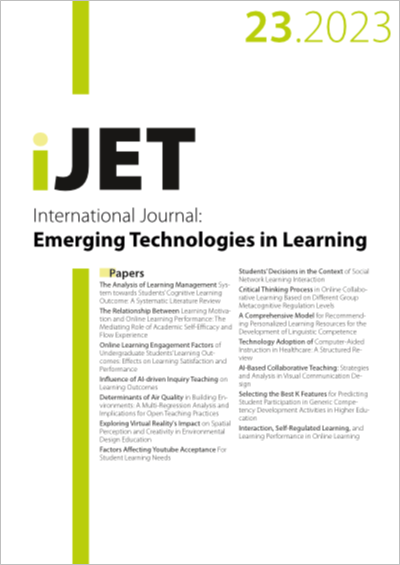Critical Thinking Process in Online Collaborative Learning Based on Different Group Metacognitive Regulation Levels
DOI:
https://doi.org/10.3991/ijet.v18i23.42839Keywords:
critical thinking process, group metacognitive regulation, lag sequential analysis, online collaborative learningAbstract
Critical thinking (CT) is acknowledged as one of the core skills to survive in the future. Learner’s critical thinking skills (CTS) could be cultivated in online learning through collaborations, which are promoted by group metacognitive regulation (GMR). The existing studies on CTS mainly focus on improving students’ CTS levels but ignore the CT process. In this study, students collaborated online in small groups with the intervention of GMR for four tasks. GMR prompts were applied to guide students in regulating their collaboration. Facione’s CTS model was adopted to code students’ CTS for content analysis. Lag sequential analysis was conducted to reveal students’ CT processes based on different GMR levels. The result shows that GMR is positively significantly correlated with CTS. Students’ CT process differs upon at different GMR levels. High-GMR groups possess the highest frequency and balanced CT process, medium-GMR groups have the most sophisticated CT process, and low-GMR groups have the lowest frequency and simplest CT pattern, which reveals the usefulness of GMR in promoting students’ CTS.
Downloads
Published
How to Cite
Issue
Section
License
Copyright (c) 2023 Nanzhe Li, Nurbiha A Shukor

This work is licensed under a Creative Commons Attribution 4.0 International License.



